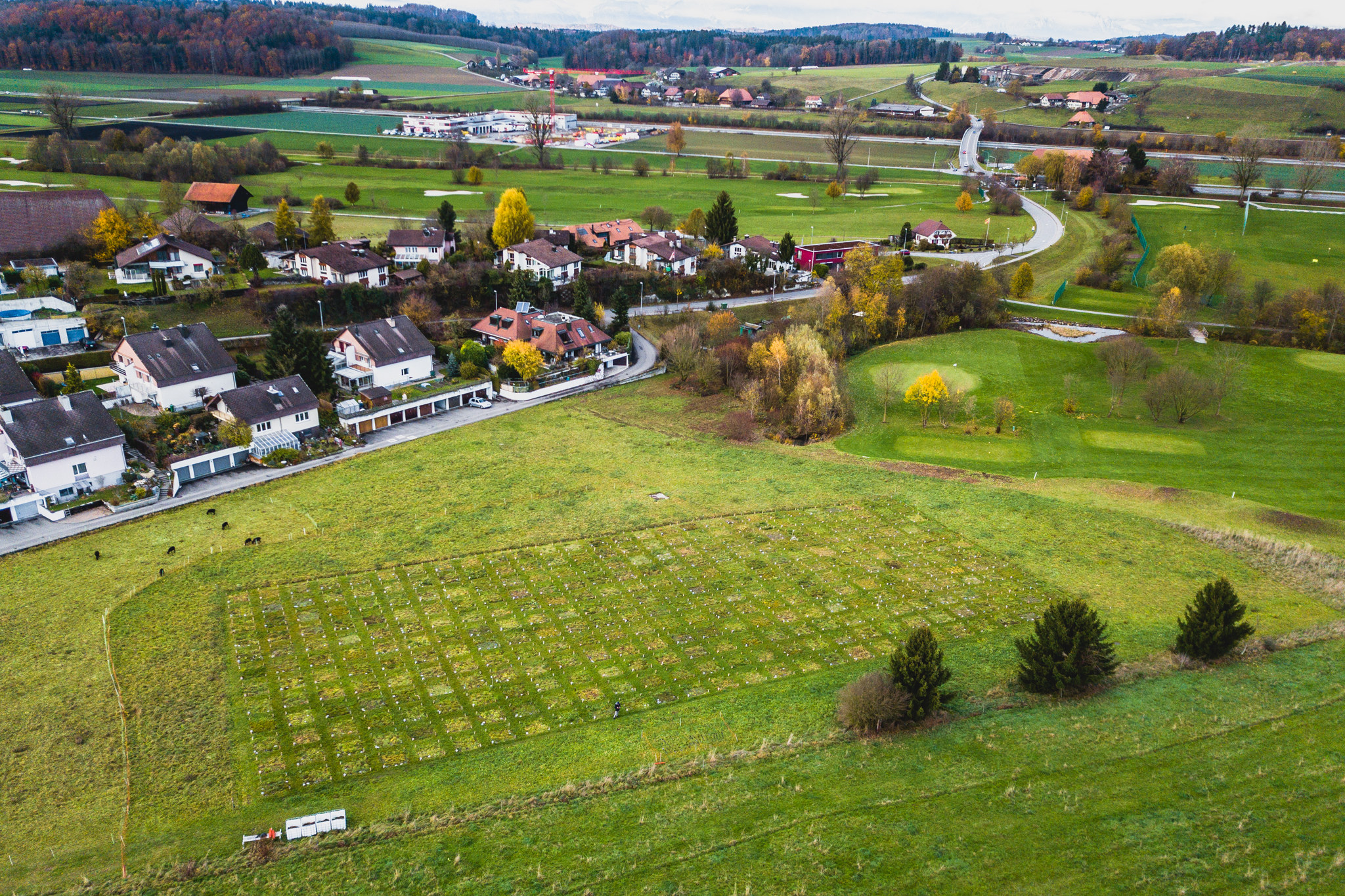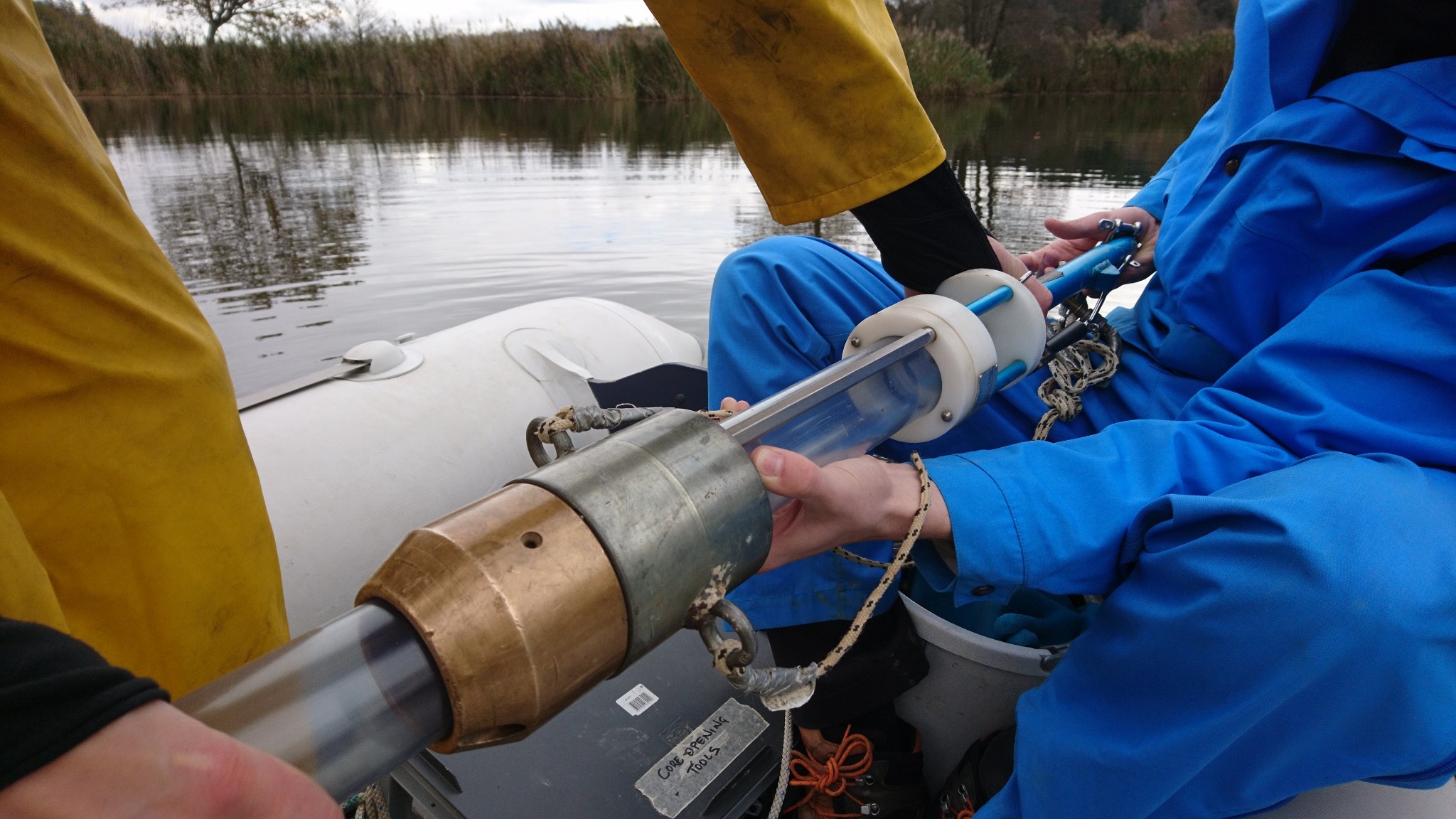SUSTAINABILITY
Agriculture for people and nature
Agriculture feeds humanity – but it also causes flowers to die out, ecosystems to be damaged, and the climate to heat up unabated. The University of Bern is looking into solutions for man and nature.
Where have the flowers gone? The question automatically comes to mind when comparing the picture of a meadow in Dombresson (NE) in 2000 with the picture of the same meadow in 2010 (see above). In just ten years, an oatgrass meadow with greater yellow rattle, wild geraniums and meadow sorrel has become a monotonous green, dominated by cocksfoot grass. The meadows in Swiss agricultural areas, which were once so rich in species, have largely disappeared in recent decades due to the intensification of agriculture. Overall, about one third of Switzerland’s plant, animal and fungal species are threatened today.
But how is Swiss flora, considered one of the richest and most diverse in Europe, actually faring? In a nationwide project, more than 400 volunteer botanists revisited known populations of all threatened and rare plant species in Switzerland and recorded their presence or absence. Researchers from the University of Bern and the National Data and Information Center on the Swiss Flora have now analyzed the data collected, and the results they published in 2020 are alarming. In their “treasure hunt” the volunteer botanists often came away empty-handed – of the 8,024 reassessed populations 27% had become extinct. The species that had previously been assessed as critically endangered by experts lost 40% of their populations within the last 10 – 50 years.
Networked habitats
The strongest declines were observed in species growing in ruderal habitats – disturbed areas under strong human influence. This group of species is particularly affected by the intensification of land use with an increased use of fertilizers and herbicides, but also a loss of microstructures such as stone piles and field margins. “The development of ecological infrastructure that connects habitats with one another and thus enables the natural exchange of populations, combined with species-targeted conservation and restoration measures would be a very important step in the right direction,” stresses Anne Kempel, lead author of the study from the Institute of Plant Sciences at the University of Bern.
Did you know...?
“The University of Bern is strengthening its successful research on biodiversity, climate and land use with the Wyss Academy for Nature, which was founded as an independent foundation in 2020. The Wyss Academy aims to advance sustainable development globally with four regional hubs in Latin America, East Africa, Southeast Asia and the Canton of Bern.”
Investing in ecological infrastructure
This is precisely the aim of the project “Environmental policies for ecological infrastructures in rural landscapes” at the Centre for Development and Environment (CDE) at the University of Bern. In the Canton of Bern, three different approaches to habitat connectivity will be explored to help implement the National Biodiversity Action Plan. In particular, research is being conducted on how to promote voluntary cooperation between various land managers and landowners.
Largest Swiss experiment for biodiversity and ecosystem functioning
The ecology experiment in Münchenbuchsee also shows that nature conservation and agriculture are by no means mutually exclusive. Here, on a 3,000 square meter meadow, researchers from the Institute of Plant Sciences are running the largest experiment on biodiversity and ecosystem functions in Switzerland. This showed that sparsely fertilized meadows are richer in species, healthier and provide almost the same amount of hay as more heavily fertilized meadows.

Biological pest control
In 2020, researchers from the Institute of Plant Sciences also developed an approach to improve a wide range of organisms that can be used for biological pest control. This strategy can contribute to more sustainable agriculture with less pesticide use.
High pesticide contamination
The importance of such new solutions was demonstrated by a study conducted by the Institute of Geography and the Oeschger Centre for Climate Change Research: This showed that pesticides are polluting the habitat of plants and animals more than ever before. Residues of the pesticides can even be found in lakes within Swiss nature reserves, something illustrated by analyses of the sediment of Lake Moossee near Bern.

The use of fertilizer puts climate targets at risk
Increasing laughing gas emissions are a further problem. This potent greenhouse gas has already increased by 20 percent compared to pre-industrial levels, as shown in a study by climate researchers in Bern. This is putting the achievement of the climate targets detailed in the Paris Agreement at risk. The reason for the increase, which has accelerated in recent decades, is primarily the increasing use of nitrogen fertilizers in food production worldwide.
Inequality drives deforestation in the tropics
Ongoing deforestation in the tropics also contributes to global warming and a loss of biodiversity. One of the most important causes is the expansion of agricultural land. A study by the Centre for Development and Environment (CDE) now shows: Wealthy individuals are increasingly investing in the agricultural sector, thereby promoting deforestation. A one-percent increase in their assets in the period examined (1991-2014) resulted in a 2.4 to 10 percent increase in acreage for what are referred to as flex crops, such as soybean and palm oil.
The “Comunidades de fundos de pasto” in Brazil are an example of a sustainable production and consumption system.
Sustainable food systems
Against this backdrop, the CDE conducts international research on approaches and levers that support comprehensive sustainability in food systems. This ranges from the preservation of production bases and agrobiodiversity to the shaping of food distribution and consumption. In concrete terms, Bernese researchers are supporting local communities in Brazil, for example, in gaining access to sufficient healthy, affordable and culturally accepted food. For this purpose, small family farms need access to land, water and the market.